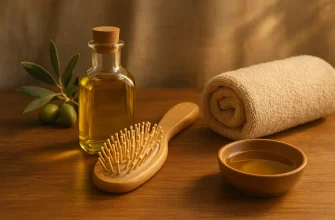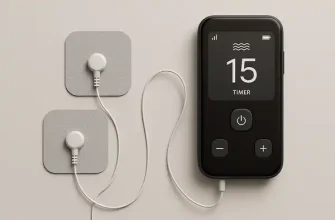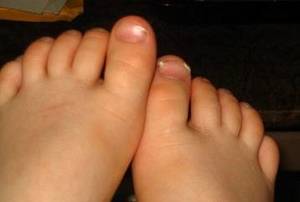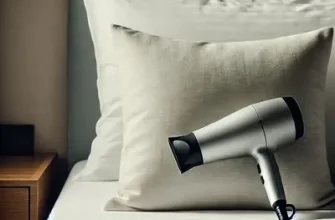If you’ve recently had a baby and noticed more hair than usual in your brush or shower drain, you’re not alone. Postpartum hair loss is a completely normal (albeit frustrating) experience for many new moms.
🕒 When Will My Hair Grow Back?
A realistic postpartum hair recovery timeline to help new moms understand what’s normal — and when to take action.
✨ Hair still looks full thanks to pregnancy hormones. Nothing unusual yet.
📉 Sudden shedding begins. Hair may come out in clumps—totally normal!
🧩 Shedding slows. Some areas may look thin, but regrowth is starting.
🌿 Baby hairs appear near hairline. Time to be gentle and nourish scalp.
🌼 Hair returns to normal for most moms. If not, consult your doctor.
Source: iytmed.com
Causes
During pregnancy, high levels of estrogen keep your hair in the “growth phase” much longer than usual, making it look fuller and thicker. But once those hormone levels drop after delivery, all that hair enters the “shedding phase”—usually around 2 to 4 months postpartum.
The medical term for this is telogen effluvium, and it affects up to 50% of new mothers in the United States ⧉. This kind of hair loss isn’t permanent and doesn’t lead to bald patches—just an overall thinning that tends to freak people out.
Hormonal changes aren’t the only culprits. Stress (yes, even the joy of a newborn can be stressful), lack of sleep, nutritional deficiencies (especially iron and vitamin D), and thyroid imbalances can all make matters worse ⧉.
How Much Hair Loss Is Too Much?
So, how do you know if what you’re experiencing is just typical shedding or something more concerning? Normally, we lose around 50 to 100 hairs per day. Postpartum, that number can jump to 300 hairs per day—sometimes even more.
If you’re noticing clumps of hair on your pillow, in the shower, or stuck to your baby’s onesie, it’s likely still within the normal postpartum range. But if you see bald spots, your hair continues falling out after 12 months, or you have other symptoms like fatigue or brittle nails, it might be time to check in with your doctor.
“Many women worry that postpartum hair loss means something is wrong,” says Reyus Mammadli, medical consultant. “But in the vast majority of cases, it’s temporary and completely reversible.”
What Does Postpartum Hair Loss Look Like?
Most women report thinning at the temples or along the hairline, giving a sort of “Vampire Widow” look (not quite runway-ready, but definitely a look). Others experience overall thinning, particularly noticeable when pulling hair back.
Hair texture may also change temporarily—what used to be smooth and glossy might feel dry and frizzy. That’s due in part to hormonal shifts and partly to how your scalp and follicles are adjusting to their new post-baby reality.
In a real-life case from San Antonio, Texas, a 31-year-old mom reported dramatic hair shedding starting at three months postpartum. She described waking up to strands on her pillow and avoiding ponytails because of visible thinning. A dermatologist confirmed telogen effluvium, offered reassurance, and recommended specific supplements.
Can You Prevent Postpartum Hair Loss?
Honestly? You can’t completely stop it. But you can reduce the severity and support regrowth. Here’s what medical professionals suggest:
Top 5 Nutrients for Postpartum Hair Regrowth
Support healthy hair from within by prioritizing these essential nutrients in your postpartum diet.
Iron – Carries oxygen to hair follicles, critical for regrowth.
Recommended: 18–27 mg/day | Found in: red meat, lentils, spinach
Protein – Structural building block of hair (keratin).
Recommended: 60–75 g/day | Found in: eggs, tofu, poultry, legumes
Biotin (Vitamin B7) – Aids keratin production and follicle strength.
Recommended: 30 mcg/day | Found in: egg yolks, nuts, seeds
Vitamin D – Helps activate hair follicles and supports immune balance.
Recommended: 600–800 IU/day | Found in: sunlight, fatty fish, fortified foods
Zinc – Supports tissue growth and follicle repair.
Recommended: 8–12 mg/day | Found in: pumpkin seeds, beef, chickpeas
Source: iytmed.com
Keep Taking Your Prenatal Vitamins
Prenatal vitamins aren’t just for pregnancy—they’re packed with nutrients that help support hair regrowth after childbirth, including biotin, folic acid, and vitamin D.
How to apply it: Continue taking your prenatal vitamins daily, ideally at the same time each day (morning or evening with food for better absorption). Don’t skip doses—even occasional inconsistency can affect how your body rebuilds its nutrient stores.
What to expect: Vitamins are not instant fixes. Most women need to take them for at least 3–6 months to start seeing noticeable changes in hair texture and shedding. A 2024 study from the Journal of Women’s Dermatology ⧉ found that women who maintained prenatal vitamin intake for at least six months postpartum had 20% less hair loss severity than those who didn’t.
Eat a Protein-Rich Diet
Hair is made of keratin—a type of protein. So, if your diet lacks sufficient protein, your body won’t prioritize hair production.
How to apply it: Aim to include 20–30 grams of protein per meal. Great options include eggs (6g per egg), lean chicken breast (around 26g per 3 ounces / 85g), beans and lentils, Greek yogurt, and tofu. Variety is important, but consistency matters more—you don’t need a brand-new menu daily, just regular intake.
What to expect: Many women begin to notice stronger, shinier hair within 8–12 weeks of improving protein intake. Think of it like building a house—you need a steady supply of bricks (protein) to keep construction going.
Get Enough Iron
Iron plays a direct role in carrying oxygen to your hair follicles. If you’re low, hair growth slows or halts entirely.
How to apply it: Women postpartum need about 18–27 mg of iron daily. Include foods like spinach, red meat, fortified cereals, lentils, and pumpkin seeds. Pair iron-rich meals with vitamin C (like oranges or bell peppers) to boost absorption.
Note: Avoid taking iron supplements with calcium-rich foods (like dairy), as calcium can block iron absorption.
What to expect: Hair improvement from iron may take 2–3 months. Your energy levels may also increase as a bonus. If you’re unsure about your levels, ask your doctor for a ferritin blood test.
Avoid Tight Hairstyles
Hairstyles that pull on your scalp can weaken follicles and lead to tension-related hair loss (known as traction alopecia).
How to apply it: Limit the use of tight buns, ponytails, braids, or any styles that tug at your edges. Go for loose, low-manipulation hairstyles like a soft bun, loose braid, or leaving your hair down.
What to expect: While this won’t stop shedding from the root cause, it prevents adding more trauma to already vulnerable hair. You may notice less breakage around the temples and hairline within a few weeks. found that women who maintained prenatal vitamin intake for at least six months postpartum had 20% less hair loss severity than those who didn’t.
How Is It Diagnosed?
Most OB/GYNs or dermatologists diagnose postpartum hair loss based on medical history and a visual scalp exam. No fancy scans required. But in cases where hair loss is excessive or prolonged, blood tests may be ordered to check for:
- Iron levels (Ferritin)
- Thyroid function (TSH, T3, T4)
- Vitamin D and B12 levels
Accuracy of diagnosis:
- Scalp exam alone: 6/10
- With lab tests: 9/10
Average cost:
- Scalp exam: $100–$150 (USD)
- Blood panel: $200–$400 (USD)
“When in doubt, get tested,” recommends Reyus Mammadli. “A basic blood panel can reveal a lot about what’s going on under the surface.”
What Are the Best Treatments Available?
If you’re ready to go on the offensive, several treatments are proven to help. While time is your best friend here, certain strategies can speed things up. Let’s break down each option so it’s easy to understand—and maybe even a little less intimidating.
Minoxidil 2% Topical Foam (Rogaine® for Women)
This is the only FDA-approved topical medication for female-pattern hair loss, and it’s commonly recommended for postpartum shedding (if you’re not breastfeeding). It’s a light foam you apply directly to your scalp once a day.
How it works: Minoxidil increases blood flow to your hair follicles, encouraging them to stay in the growth phase longer. Think of it as giving your roots a daily motivational speech.
Experience: Most users don’t feel anything unusual—no burning, no pain. Some may notice a slightly greasy scalp if they overapply.
Effectiveness: Moderate. Studies suggest about 40% of users notice visible improvement after 3–6 months of consistent use.
Time commitment: Apply once daily.
Cost: About $30–$45 (USD) per month. Available over the counter. You may start seeing results in 3–4 months, but full effects can take up to 6 months.
Platelet-Rich Plasma (PRP) Therapy
This high-tech treatment uses your own blood to stimulate hair growth—yep, your own blood.
How it works: A doctor draws a small amount of your blood, spins it in a centrifuge to concentrate the platelets, and injects it into your scalp. These platelets are like messengers that signal your follicles to “wake up” and grow.
Experience: Minimal discomfort. You’ll feel tiny pinches during the injections (think mosquito bites, not bee stings). A numbing cream helps.
Effectiveness: High. Studies report up to 60–70% improvement in hair density after 3–4 sessions ⧉.
Time commitment: Sessions take about 45 minutes. Typically done monthly for 3–4 months, followed by maintenance every 6–12 months.
Cost: Around $700–$1,000 per session.
Low-Level Laser Therapy (LLLT)
This is a fancy name for using light to stimulate your scalp. It might sound futuristic, but it’s safe, painless, and FDA-cleared.
How it works: You wear a laser cap or comb that emits red light. This light penetrates your scalp and energizes your hair follicles—sort of like sunlight for your scalp, without the UV damage.
Experience: Totally painless. Feels like wearing a lightweight cap or brushing your hair.
Effectiveness: Moderate to high. Some users report visible improvements within 12–16 weeks ⧉, especially when combined with other treatments.
Time commitment: 15–30 minutes, 3 times a week.
Cost: Devices range from $500 to $1,200 depending on the brand and coverage area.
Natural Options (for Breastfeeding Moms)
If you’re nursing, some treatments like Minoxidil aren’t recommended. But you still have safe, gentle options.
Options include:
- Rosemary oil: Believed to boost circulation to the scalp. Massage a few drops (diluted with a carrier oil) 2–3 times a week.
- Scalp massage: Stimulates blood flow and reduces stress. Plus, it feels amazing.
- Nutrient support: Keep taking your prenatal vitamins, eat iron-rich foods, and ensure you’re getting enough protein.
Effectiveness: Mild to moderate, but zero side effects.
Time commitment: Varies. Most effective when done consistently for several months.
Reyus Mammadli, medical consultant, notes: “For many women, combining two or more methods—like PRP with vitamins or lasers with scalp massage—yields the best results.” (limited evidence but safe), scalp massage, and nutrient-based strategies.
When Will It Stop?
Good news: postpartum hair loss usually resolves on its own within 6 to 12 months. For some women, hair is back to its pre-pregnancy state by baby’s first birthday. For others, especially those with underlying deficiencies, it can take a bit longer.
A 29-year-old mom from Minneapolis shared her story: By 14 months postpartum, her hair had returned to its former volume, thanks to consistent supplements and PRP therapy sessions.
Emotional Impact of Postpartum Hair Loss
Hair loss after pregnancy isn’t just physical — it can deeply affect emotional well-being. Here’s how real moms experience it.
47% of postpartum women report feeling anxious or self-conscious due to hair loss.
3 in 5 new mothers say hair shedding negatively affected their self-esteem.
41% of surveyed moms avoided social events because of noticeable hair thinning.
1 in 4 women said their partner didn’t realize how distressing hair loss was for them.
Source: iytmed.com
Editorial Advice
Don’t panic—really. Losing handfuls of hair after giving birth might be alarming, but it’s usually a temporary situation that your body can recover from naturally.
Reyus Mammadli, medical consultant, emphasizes the importance of patience and nourishment: “Think of your hair like a plant. If the roots aren’t getting the nutrients they need, the leaves will fall off. Feed your body right, and regrowth will follow.”
If you’re past the 12-month mark with little improvement, talk to your doctor or a dermatologist. You may benefit from medical treatments or uncover a treatable condition like thyroid dysfunction or iron-deficiency anemia.
And hey—when all else fails, a good volumizing shampoo and a side part can work wonders.








